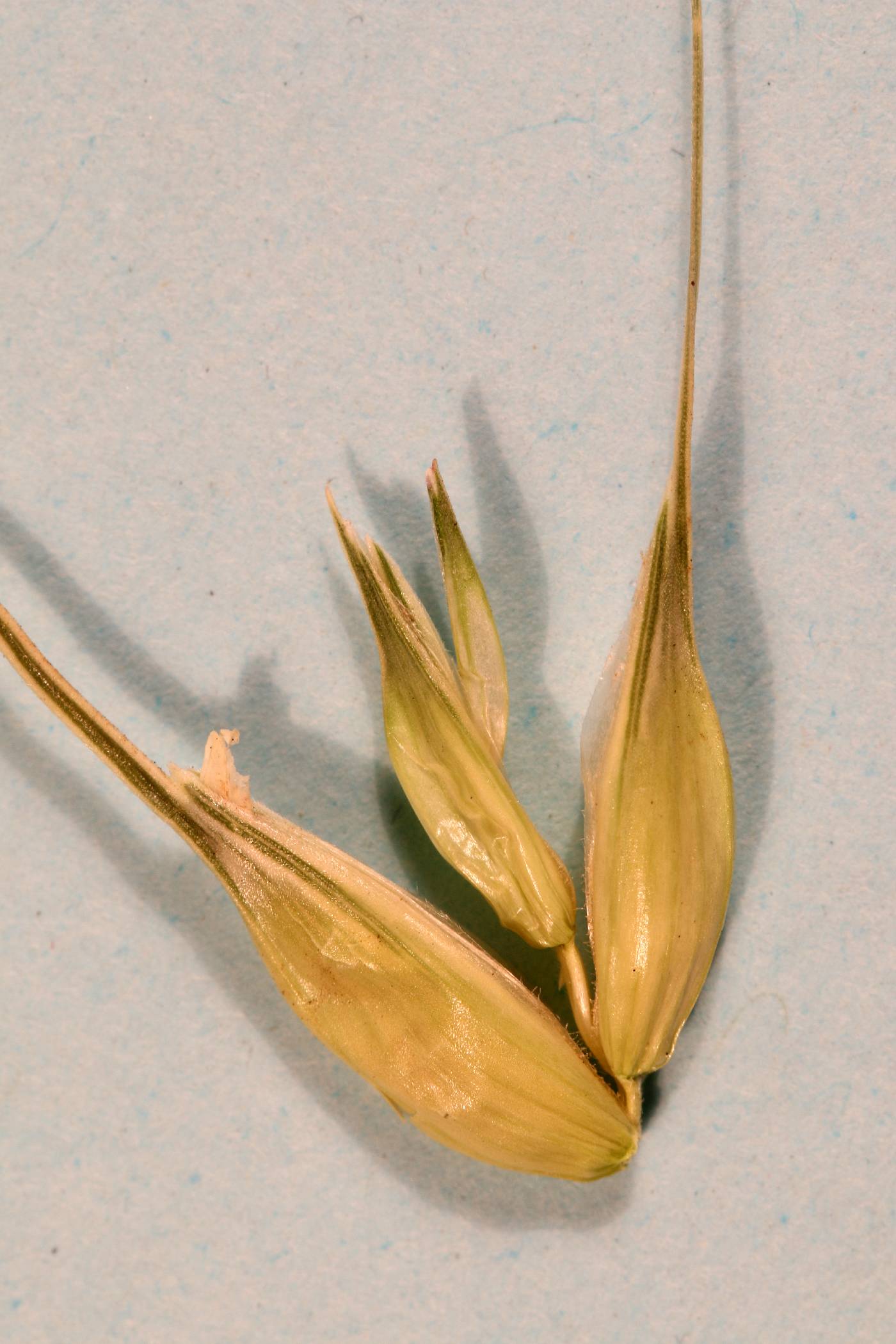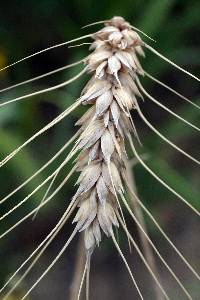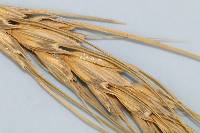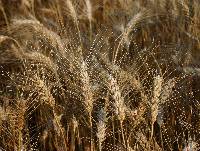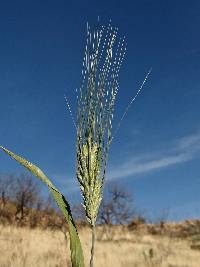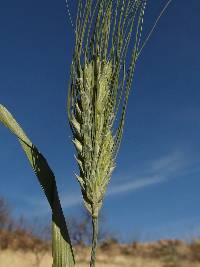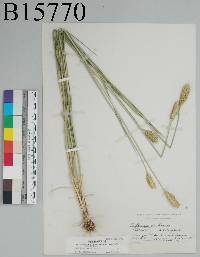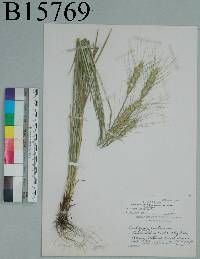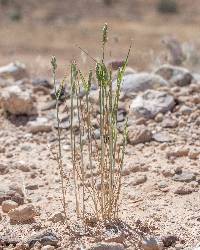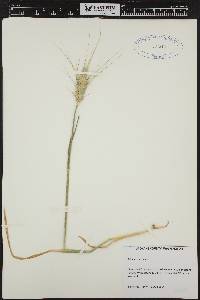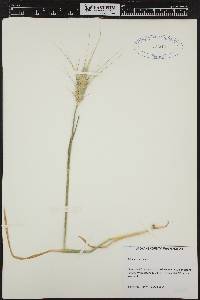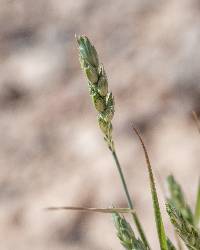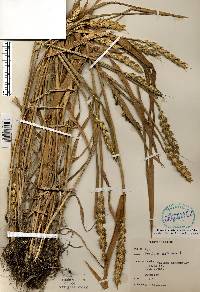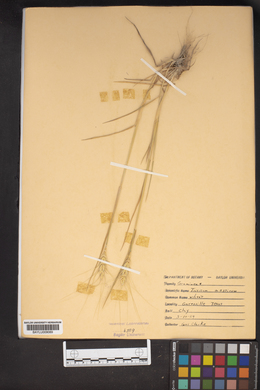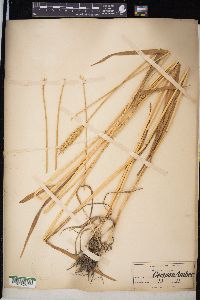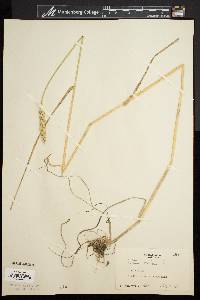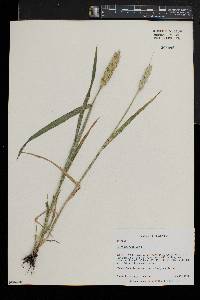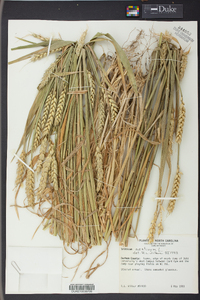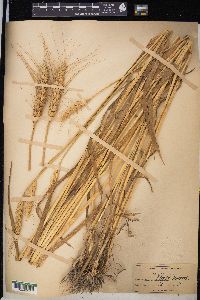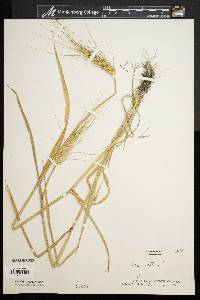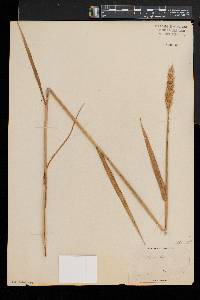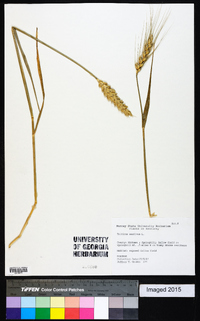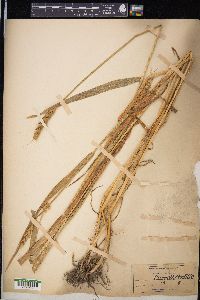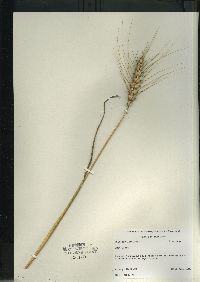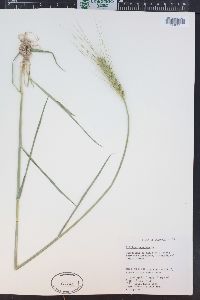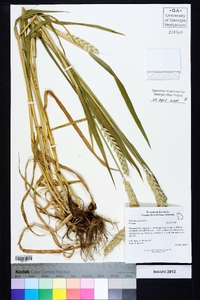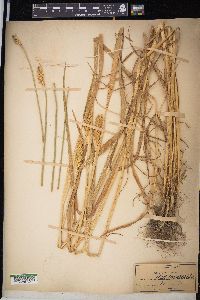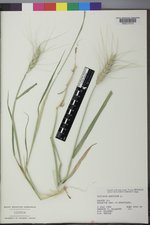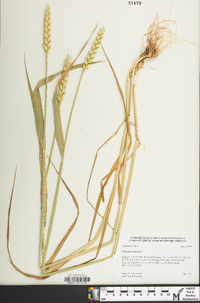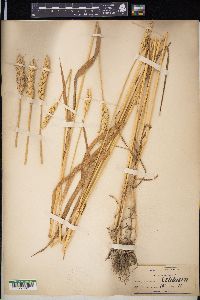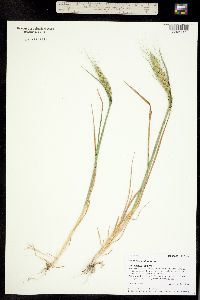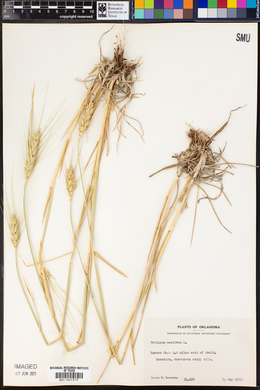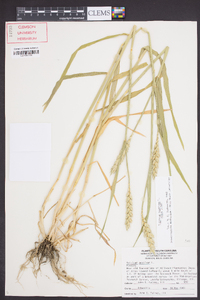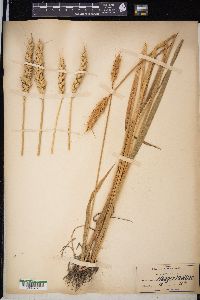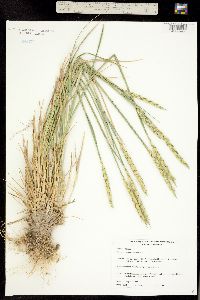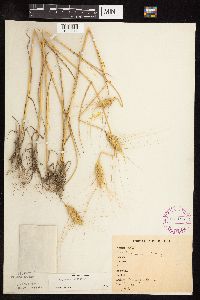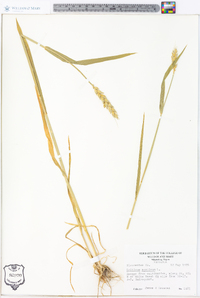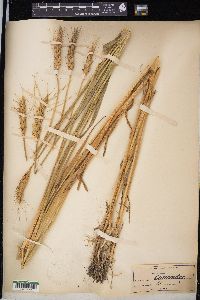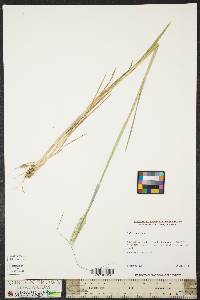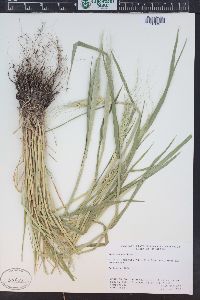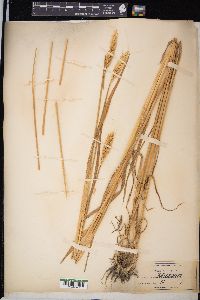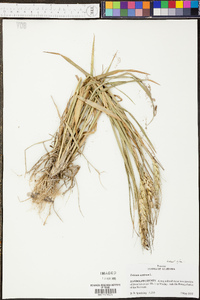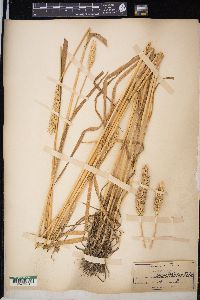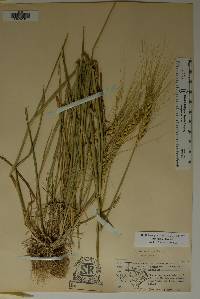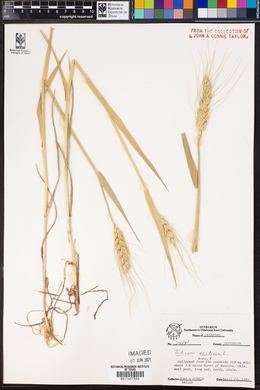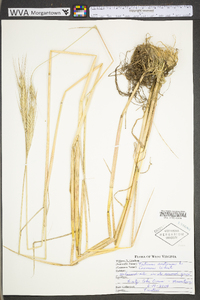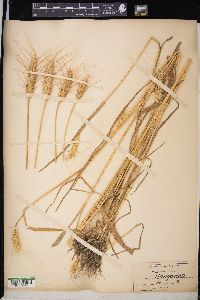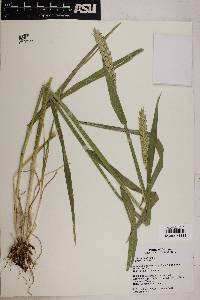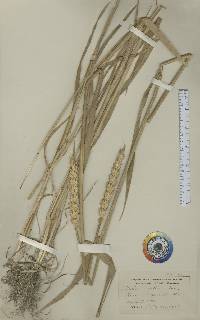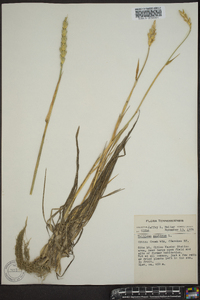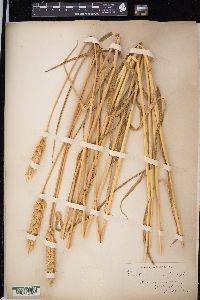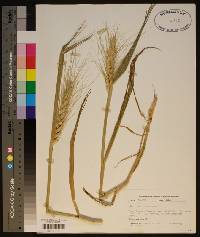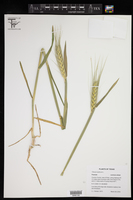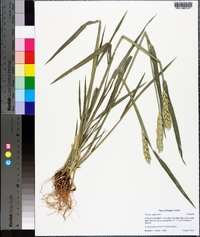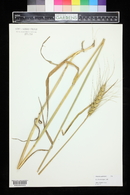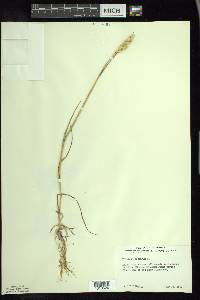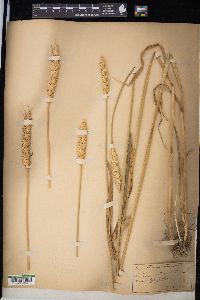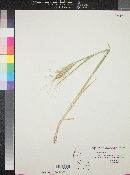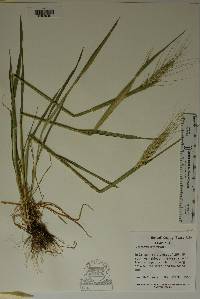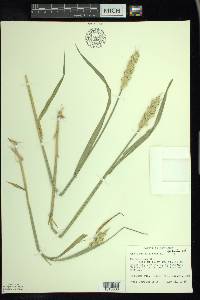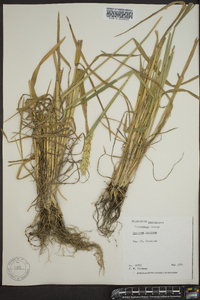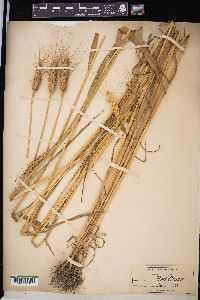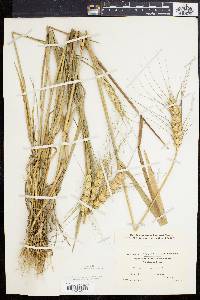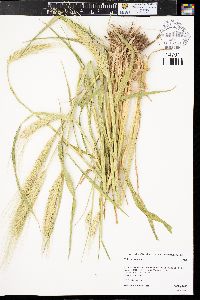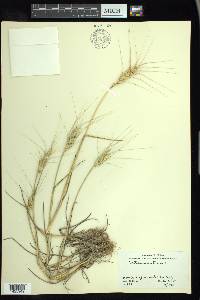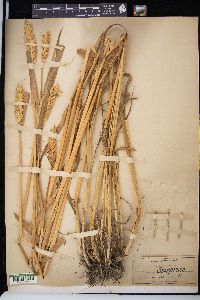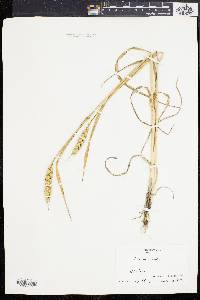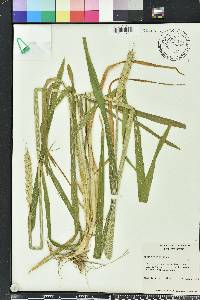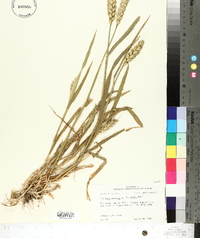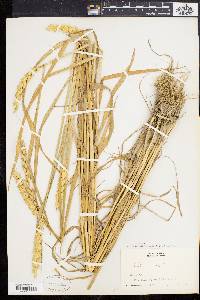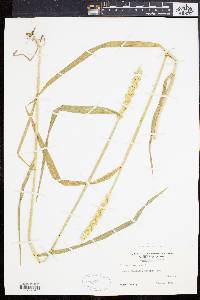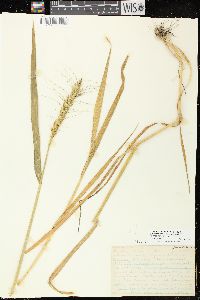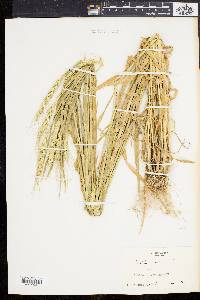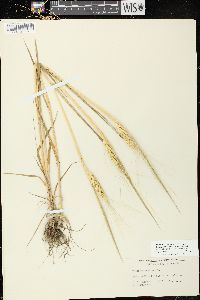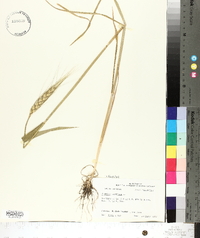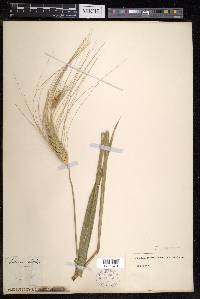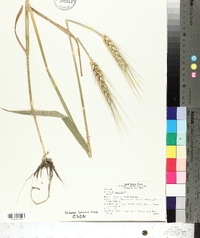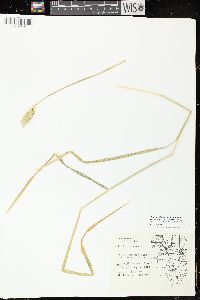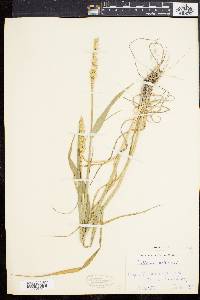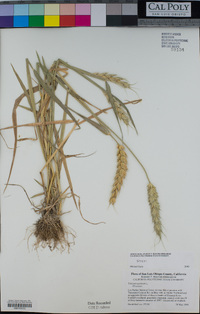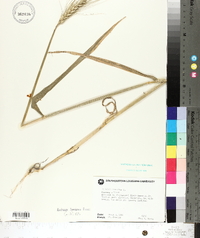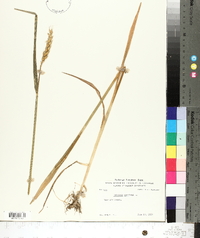
|
|
|
|
Family: Poaceae
Bread Wheat, more...common wheat, wheat, Bl, Soft Wheat (es: trigo)
[Triticum aestivum subsp. vulgare (Vill.) Thell., moreTriticum aestivum var. hybernum (L.) Farw., Triticum estivum Raf., Triticum hybernum L., Triticum macha Dekap. & Menab., Triticum sativum Lam., Triticum sativum var. aestivum (L.) Alph. Wood, Triticum sativum var. vulgare (Vill.) Vilm., Triticum sphaerococcum Percival, Triticum vulgare Vill., Triticum vulgare var. aestivum (L.) Spenn.] |
Culms 14-150 cm; nodes glabrous or pubescent; internodes usually hollow, even immediately below the spikes. Blades 6-15(20) mm wide, glabrous or pubescent. Spikes (3.5)6-18 cm, usually thicker than wide to about as thick as wide, wider than thick in compact forms; rachises shortly ciliate at the nodes and margins, not disarticulating. Spikelets 10-15 mm, appressed or ascending, with 3-9 florets, 2-5 seed-forming. Glumes 6-12 mm, coriaceous, loosely appressed to the lower florets, usually keeled in the upper 1/2, sometimes prominently keeled to the base, terminating in a tooth or awn, awns to 4 cm; lemmas 10-15 mm, toothed or awned, awns to 12 cm; paleas not splitting at maturity. Endosperm mealy to flinty. Haplomes AuBD. 2n = 42. Triticum aestivum is the most widely cultivated wheat. Both winter and spring types are grown in the Flora region. In addition to being grown for bread flour, T. aestivum cultivars are used for pastry-grade flour, Oriental-style soft noodles, and cereals. Club wheats, sometimes called Triticum compactum Host, are cultivated in the Pacific Northwest for export to Asian markets. They have short (3.5-6 cm), compressed spikes, with up to 25 spikelets having 2-6 florets. Their spike shape varies from oblong or oval with uniformly distributed spikelets to club-shaped with spikelets crowded towards the apex. No wild hexaploid progenitors of Triticum aestivum are known, but the two distinguishing characteristics of wild Tritcum species, fragile rachises breaking into wedge-shaped units and closely appressed glumes, are found in plants cultivated in Tibet and named T. aestivum subsp. tibetanum J.Z. Shao. Annuals, Terrestrial, not aquatic, Stems nodes swollen or brittle, Stems erect or ascending, Stems caespitose, tufted, or clustered, Stems terete, round in cross section, or polygonal, Stem internodes hollow, Stems with inflorescence less than 1 m tall, Stems with inflorescence 1-2 m tall, Stems, culms, or scapes exceeding basal leaves, Leaves mostly basal, below middle of stem, Leaves mostly cauline, Leaves conspicuously 2-ranked, distichous, Leaves sheathing at base, Leaf sheath mostly open, or loose, Leaf sheath smooth, glabrous, Leaf sheath hairy, hispid or prickly, Leaf sheath hairy at summit, throat, or collar, Leaf sheath and blade differentiated, Leaf blades linear, Leaf blade auriculate, Leaf blades 1-2 cm wide, Leaf blades mostly flat, Leaf blades mostly glabrous, Leaf blades scabrous, roughened, or wrinkled, Ligule present, Ligul e an unfringed eciliate membrane, Inflorescence terminal, Inflorescence a dense slender spike-like panicle or raceme, branches contracted, Inflorescence solitary, with 1 spike, fascicle, glomerule, head, or cluster per stem or culm, Inflorescence spike linear or cylindric, several times longer than wide, Inflorescence single raceme, fascicle or spike, Inflorescence branches more than 10 to numerous, Flowers bisexual, Spikelets sessile or subsessile, Spikelets laterally compressed, Spikelet 3-10 mm wide, Spikelets with 2 florets, Spikelets with 3-7 florets, Spikelets solitary at rachis nodes, Spikelets all alike and fertille, Spikelets bisexual, Spikelets disarticulating above the glumes, glumes persistent, Spikelets disarticulating beneath or between the florets, Spikelets not disarticulating, or tardy, Spikelets closely appressed or embedded in concave portions of axis, Rachilla or pedicel glabrous, Glumes 2 clearly present, Glumes equal or subequal, Glumes shorter than adjacent lemma, Glumes awn-like, elongated or subulate, Glumes awned, awn 1-5 mm or longer, Glumes keeled or winged, Glume surface hairy, villous or pilose, Glumes 4-7 nerved, Glumes 8-15 nerved, Glumes 2-5 toothed, Lemmas thin, chartaceous, hyaline, cartilaginous, or membranous, Lemma 5-7 nerved, Lemma glabrous, Lemma apex acute or acuminate, Lemma mucronate, very shortly beaked or awned, less than 1-2 mm, Lemma distinctly awned, more than 2-3 mm, Lemma with 1 awn, Lemma awn less than 1 cm long, Lemma awn 1-2 cm long, Lemma awned from tip, Lemma awns straight or curved to base, Lemma margins thin, lying flat, Lemma straight, Palea present, well develop Cronquist et al. 1977, Gould 1980, Heil et al 2013 Common Name: common wheat Duration: Annual Nativity: Non-Native Lifeform: Graminoid General: Annual grass, often a winter annual, erect stems 50-100 cm tall, freely branching at base. Vegetative: Glabrous sheath; ligules 0.5-1.5 mm long, entire; blades flat, sometimes very broad, 2-8 mm wide, glabrous or scabrous above, with prominent auricles. Inflorescence: Spikes 5-10 cm long, rachis continuous, flattened; spikelets broad, 3-5 flowered; glumes subequal, 6-9 mm long, indurate, strongly keeled towards one side, scabrous or densely hispid, unequally 5-7 nerved, only the keel nerve and sometimes a pair of lateral nerves conspicuous, awned from between 2 broad lobes, awns 1-4 mm long; lemmas 7-12 mm long, similar to glumes, with a mucronate tip or awn up to 7 cm long. Ecology: Found widespread where it has escaped cultivation, rarely becoming established. In the southwest it is sometimes found growing where hay was recently used for soil stabilization. Distribution: In cultivation worldwide, especially in the northern hemisphere. Notes: This is cultivated wheat, and it can occasionally escape cultivation and grow wild as well. There are many different varieties of wheat, so it is difficult to isolate specific varieties here. Can be confused with Hordeum vulgare (common barley), but pay attention to the lemmas of Triticum aestivum being densely hispid. Ethnobotany: Seeds of this grain crop used to make bread, porridge, used for feed, flour, gruel, and beverages. Etymology: Triticum is the classical Latin name for wheat, while aestivum means flowering, ripening or developing in summer. Synonyms: Triticum hybernum, T. macha, T. sativum, T. sphaerococcum, T. vulgare Editor: SBuckley, 2010, AHazelton 2015 Annual or winter-annual, 5-12 dm, usually branched below; lvs flat, 2-10(-20) mm wide; spikes mostly 5-10 cm, glumes subequal, 6-10 mm; lemmas 7-12 mm, similar to the glumes, indurate but with scarious margins, the tip broadly lobed and mucronate, or with an awn to 7 cm; anthers 2.5 mm; 2n=42. Eurasian cultigen, often spontaneous in fields and along roadsides with us, probably never truly persistent, but repeatedly re-established. Gleason, Henry A. & Cronquist, Arthur J. 1991. Manual of vascular plants of northeastern United States and adjacent Canada. lxxv + 910 pp. ©The New York Botanical Garden. All rights reserved. Used by permission. |
|
|
|

